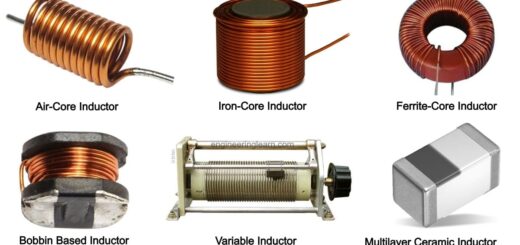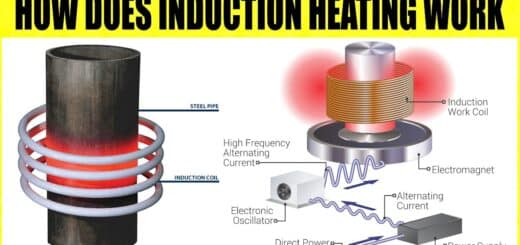What is an Electromagnet? Uses, Diagram, Properties, Application & Advantages
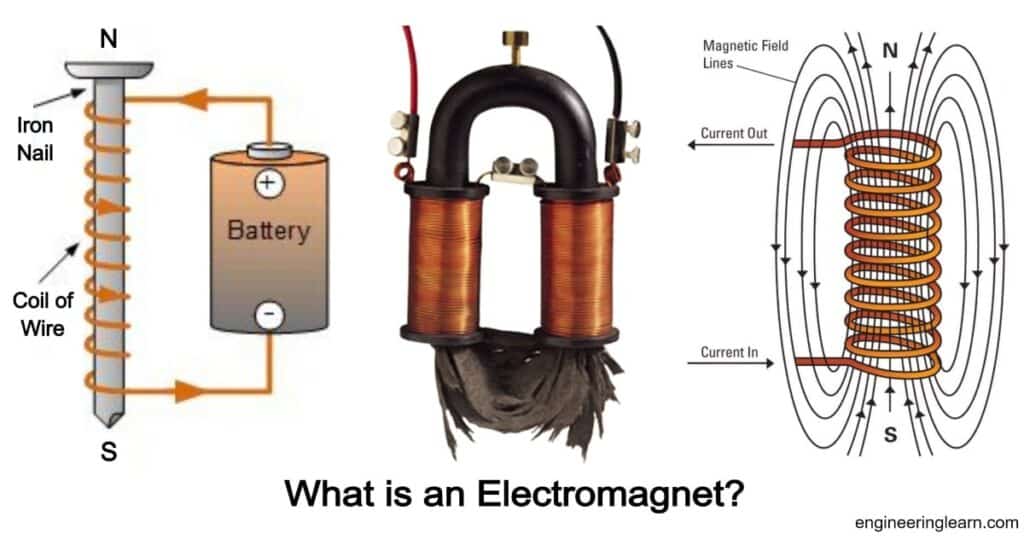
What is an Electromagnet?
What is an Electromagnet? Uses, Diagram, Properties, Application & Advantages :- Like in Electrostatics we have positive and negative charges similarly in magneto statics we have north and south pole. Now, the positive and negative charges both have their own electrostatic fields associated with them and also electric field lines originate from positive charge and terminate on negative charge. And also these positive and negative charges can exist separately. But if we talk about north and south pole of a magnet then they can’t exist separately. Whenever north pole come then south pole will definitely come along with it.
Magnetic field lines outside a magnet, originates from north pole and terminates on south pole but inside the magnet it moves from south to the north pole i.e. it forms a close loop.But electrostatic field lines don’t form a close loop.
Now coming back to the original question, how to define an electromagnet?
Like in electrostatics, we define charge as the entity which has its own electric field associated with it, we are not going to define what the pole is? Because as discussed above a pole don’t exist separately. So we will group together north and south pole which now be called as a magnet and now we will define what the magnet is?
So, a magnet is an entity which has its own magnetic field associated with it.
An electromagnet is a device which derives its magnetism by current flowing through a conductor.
Or
An electromagnet is an artificial magnet in which the magnetic field is developed with the help of electric current. (Remember the magnetic effect of current)
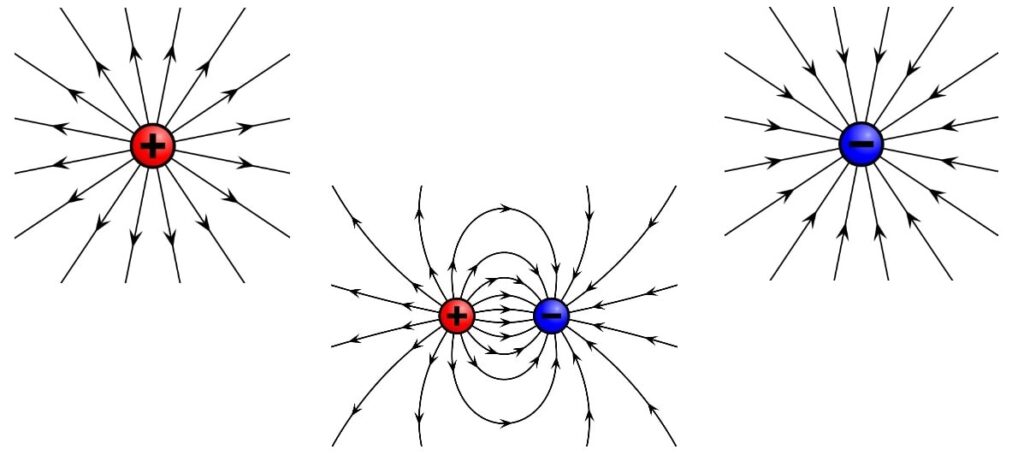
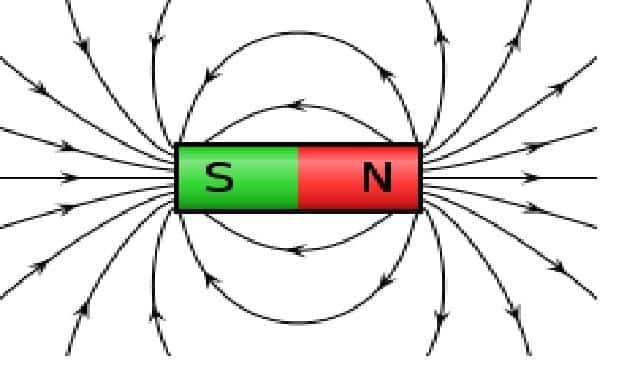
Properties of a Magnet
- A magnet always attracts ferromagnetic materials.
- Magnetic field strength is greater at poles as compared to the strength at the middle of a magnet.
- When a magnet is suspended freely in air then it aligns itself in the north- south direction of the earth such that a magnet’s north faces earth’s south and vice versa.
- Like poles of a magnet always repel each other while opposite poles always attract. For example, north pole will repel another north pole while the same north pole will attract the other south pole.
- When a magnet is broken into two pieces than those two pieces again become two magnets both having one pole as north and the other pole as south.
Oersted Observation
There is a significant deflection in a compass needle when it is brought near a wire carrying an electric current. It is also observed that with the reverse in the direction of the current the direction of compass needle also changes and it gets reversed.
This observation justifies the fact that a magnetic field is created around a current carrying conductor. This phenomenon is termed as magnetic effect of electric current.
Hence it gets proved that magnet can be created with the help of electric current.
MAGNETIC FIELD DUE TO DIFFERENT ARRANGEMENTS OF CURRENT CARRYING CONDUCTOR
MAGNETIC FIELD DUE TO STRAIGHT CURRENT CARRYING CONDUCTOR
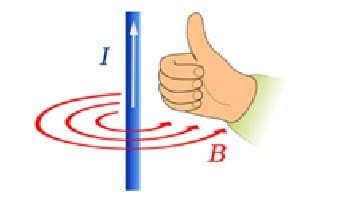
Point the thumb in the direction of current flowing in a straight conductor then the direction in which fingers curl gives the direction of magnetic field (right hand thumb rule).And the direction of magnetic field indicates north pole and opposite will of course be a south pole.
MAGNETIC FIELD DUE TO CIRCULAR CURRENT CARRYING CONDUCTOR
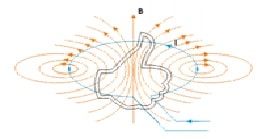
Curl the fingers in the direction of flowing current in a circular conductor then the stretched thumb will give the direction of magnetic field(right hand thumb rule).The stretched thumb will indicate north pole (in direction of field) and the opposite would be a south pole.
How to Make an Electromagnet?
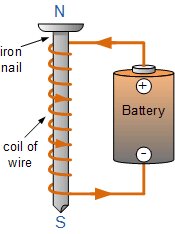
Things required– copper wire, nail, battery
- Wound the copper wire on a nail.
- Attach a battery across the two terminals of a wire.
- Electromagnet is ready.
Bring this nail closer to other nails or iron pieces; you will notice that this nail is attracting those nails and iron pieces.
Advantages of Electromagnet
- The main advantage of an electromagnet is that we can control the magnetic field strength by controlling the amount of current flowing through it.
- Also the poles of this magnet can be changed by changing the direction of current flowing through it (i.e. reversing the supply voltage).
How to Control Strength of Magnetic Field of an Electromagnet?
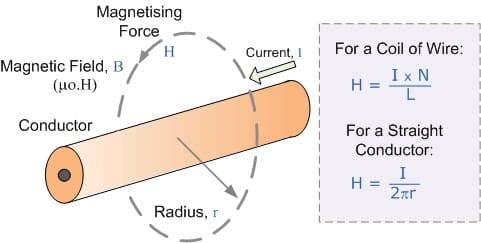
Where :-
- H – magnetic field strength in ampere-turns/metre (At/m)
- N – number of turns in coil
- I – current flowing in coil in ampere (A)
- L – length of coil in meters (m)
Therefore, the strength of magnetic field of an electromagnet depends on the following factors-
- Number of turns in coil.
- Amount of current flowing in the coil.
- Type of core material.
Why Air Core is Not Used in an Electromagnet?
Bar Magnet & Air Cored Coil
The magnetic field produced by an electric current flowing through a coil having air as core is similar to that of a bar magnet.

The magnetic field lines actually give the representation of how a magnet is going to influence or affect other magnetic materials surrounding it.
Iron Cored Coil
Inserting an iron core within the coil increases magnetic field density (number of magnetic lines) inside the coil as permeability of iron is much greater than that of an air.
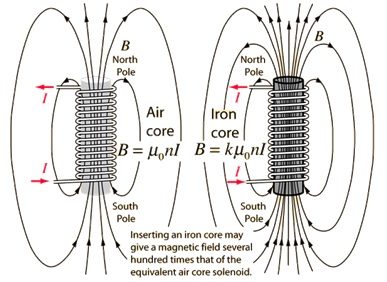
Solenoid– an insulated copper wire wound closely in the form of a helix.
Therefore, electromagnets are usually formed of iron core solenoids. The ferromagnetic property of iron core causes all the dipoles to align in the same direction as that of the magnetic field resulting in the assisting of internal magnetic field to the external magnetic field. So, this way the overall magnetic field of the electromagnet formed by solenoid with core inside increases greatly over the magnetic field produced by the air cored solenoid.
K is the relative permeability of iron showing the number of times the magnetic field increases.
Applications of Electromagnet
- Used in Relays for detecting fault condition
- Used for magnetic separation for separating magnetic materials from non magnetic materials
- If accidentally pieces of magnet fall in eyes then they are removed from eyes with the help of an electromagnet.
- Crane containing electromagnet is used to lift heavy iron goods.
Image Source :- lumenlearning, electronics-tutorials, northeastern
